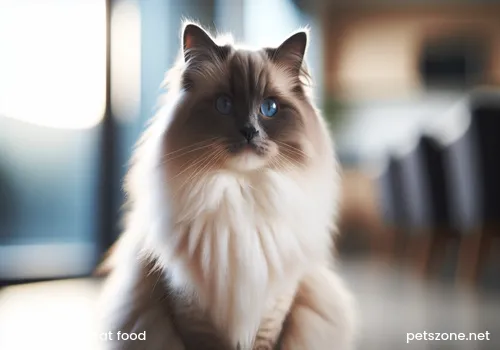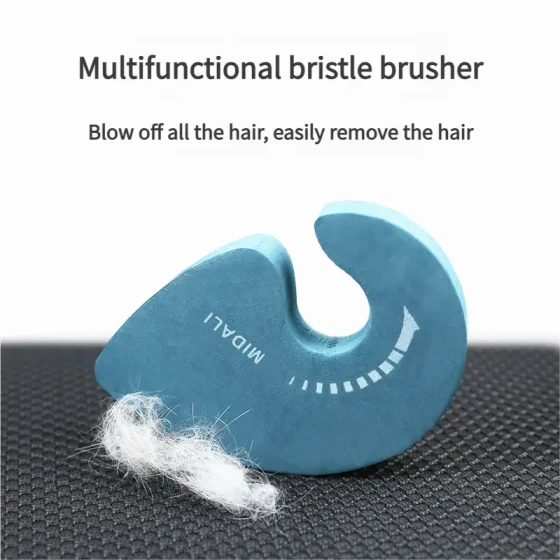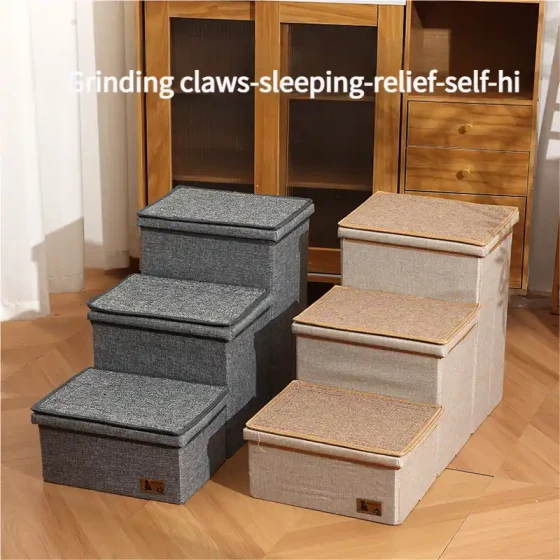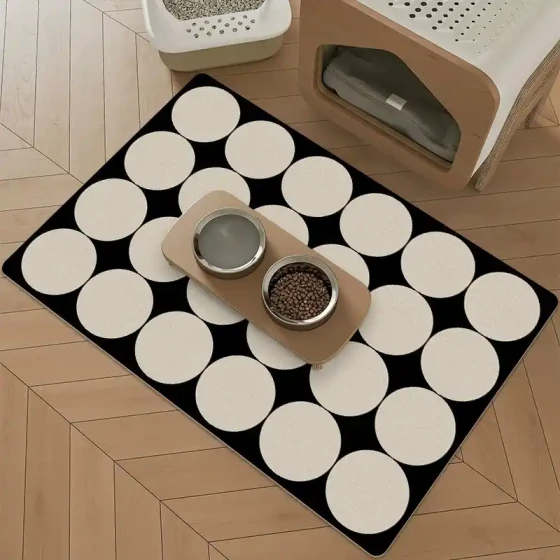Ten Simple Homemade Cat Recipes_Easily Learn How to Make Nutritious Cat Meals
Want to make nutritious and delicious homemade cat meals for your cat? It’s actually not difficult, but you need to ensure your cat gets all the essential nutrients, especially taurine. Homemade cat food allows you to better control ingredients, avoid artificial additives, and can also increase your cat’s water intake. However, making a nutritionally balanced cat meal requires professional knowledge, so it is best to consult a veterinarian or pet nutritionist.
Cats are obligate carnivores, and their digestive system and nutritional needs differ greatly from humans. Blindly feeding homemade food may lead to malnutrition and seriously affect your cat’s health. Therefore, before starting to make homemade cat meals, it is crucial to fully understand your cat’s nutritional requirements and which foods to avoid.
Why Choose Homemade Cat Food?

Many cat owners choose homemade cat food for various reasons:
- Control Ingredients: Homemade cat food lets you clearly know everything your cat eats. You can select fresh, high-quality ingredients and avoid the chemicals, artificial colors, and preservatives that may be in commercial cat food.
- Meet Special Needs: For cats with food allergies or other health problems, homemade food can be tailored better to their specific needs.
- Increase Water Intake: Homemade wet food contains more moisture, helping cats drink more water, which is especially important for their urinary tract health.
The Cat Nutrition Pyramid: How Much Do You Know About Essential Nutrients?
A cat’s diet is not simply about lots of meat; they need a series of specific nutrients to stay healthy. Just like martial arts masters train both inside and out, a cat’s health depends on a balanced diet.
- Protein: Cats have a high protein requirement, mainly from animal meat. Protein is the basis for building and repairing tissues, maintaining muscle mass, and energy levels.
- Fat: Healthy fats are essential for a cat’s skin, coat, and overall cellular function, providing energy and helping absorb fat-soluble vitamins. Omega-3 and Omega-6 fatty acids are good examples and can be obtained from fish oil or flaxseed.
- Taurine: This is absolutely the "MVP" of a cat’s diet! Taurine is an essential amino acid that cats cannot synthesize in sufficient amounts and must obtain from food. Taurine deficiency can cause serious health issues, such as retinal degeneration leading to blindness, dilated cardiomyopathy (a heart disease), and even death. Taurine is mainly found in animal hearts, livers, other organs, as well as fish and shellfish.
- Vitamins and Minerals: Including vitamins A, D, E, calcium, phosphorus, magnesium, etc., they play important roles in a cat’s immune system, bone health, and metabolism. Notably, cats cannot efficiently convert vitamin A from plants like humans can, so they must get it directly from animal-based foods.
- Carbohydrates: Compared to protein and fat, cats have a low carbohydrate requirement. Excess carbohydrates may lead to obesity or diabetes in cats.
Precautions and Common Risks When Making Cat Food
Although homemade cat food sounds great, there are many pitfalls that cat owners need to be very careful about.
- Nutritional Imbalance: This is the biggest challenge of homemade cat food. Many online recipes may not have undergone professional nutritional analysis, and long-term feeding could cause cats to lack essential nutrients and develop health issues.
- Food Poisoning: Undercooked raw meat may contain bacteria like Salmonella and E. coli, which are risky not only for cats but can also infect humans.
- Accidental Ingestion of Toxic Foods: Many foods harmless to humans are deadly toxic to cats, such as onions, garlic, grapes, raisins, chocolate, alcohol, etc.
- Bone Risks: Cooked bones become brittle and can splinter, injuring a cat's digestive tract. If bones are included in recipes, they must be thoroughly ground.
- Time and Financial Costs: Preparing nutritionally balanced cat food requires a lot of time and energy. Buying various high-quality ingredients and supplements can be more expensive than commercial cat food.
Important Reminder! Homemade cat food is not simply "what humans eat, cats eat." Before starting, be sure to consult a professional veterinarian or pet nutritionist, obtain scientifically formulated recipes, and learn how to add supplements correctly. Do not directly copy unverified online recipes.
10 Simple Homemade Cat Recipes (For Reference Only, Please Consult a Veterinarian or Nutritionist)
The following recipes are just some simple examples of homemade cat meals. They may not provide all the nutrients cats need. Before actual preparation and feeding, please be sure to consult a professional veterinarian or pet nutritionist to adjust the recipes and add necessary supplements based on your cat’s specific condition, especially taurine.
During preparation, ensure ingredients are fresh and fully cooked, and avoid adding any toxic seasonings or ingredients. All meats in the recipes refer to cooked, deboned, skinned, and unseasoned parts.
- Chicken Pumpkin Puree:
- Ingredients: Cooked chicken breast, pumpkin puree.
- Preparation: Shred or dice cooked chicken breast and mix with unsweetened pumpkin puree. Pumpkin puree provides dietary fiber to aid digestion.
- Turkey Carrot Rice:
- Ingredients: Cooked turkey, small amount of cooked diced carrots, small amount of cooked rice.
- Preparation: Dice turkey; cook and dice carrots until soft; cook rice in a very small amount. Mix all three. Note the rice quantity must be very small as cats have low carbohydrate needs.
- Beef Spinach Egg Yolk:
- Ingredients: Cooked lean beef, small amount of cooked spinach leaves, cooked egg yolk.
- Preparation: Dice beef; cook and finely chop spinach; mash egg yolk. Mix together. Spinach contains vitamins; egg yolk is rich in fat and some nutrients.
- Fish Pea Soup:
- Ingredients: Cooked boneless fish (such as salmon), small amount of cooked peas, fish or chicken broth (unsalted).
- Preparation: Flake fish; cook peas until soft; add a small amount of unsalted broth. Choose fish with few bones and ensure all bones are removed.
- Chicken Heart and Liver Puree:
- Ingredients: Cooked chicken hearts and liver.
- Preparation: Cook chicken hearts and liver and mash into a puree. Chicken hearts and liver are rich in taurine and other essential nutrients. But be careful not to overfeed liver, as it may cause vitamin A toxicity.
- Duck Okra Meal:
- Ingredients: Cooked duck meat, small amount of cooked okra pieces.
- Preparation: Dice duck meat; cook and dice okra; mix together. Duck is rich in fat, beneficial for cat’s skin and coat.
- Beef Broccoli Meal:
- Ingredients: Cooked beef, small amount of cooked finely chopped broccoli.
- Preparation: Dice beef; cook and finely chop broccoli; mix together. Broccoli provides a small amount of fiber.
- Chicken Oatmeal Porridge:
- Ingredients: Cooked chicken breast, small amount of cooked oats, small amount of chicken broth (unsalted).
- Preparation: Shred chicken; cook oats into porridge; add a small amount of chicken broth and mix. Oats provide a small amount of fiber but must be strictly controlled in amount.
- Salmon Sweet Potato Puree:
- Ingredients: Cooked salmon, small amount of cooked sweet potato puree.
- Preparation: Flake salmon; cook and mash sweet potato into puree; mix together. Salmon is rich in Omega-3 fatty acids, beneficial for cat health.
- Egg Beef Patty:
- Ingredients: Cooked lean ground beef, cooked egg.
- Preparation: Mix ground beef and egg; can slightly press into patty shape. Eggs provide protein and fat.
Important Notice: The above recipes are basic examples and should not be used as cats’ long-term staple food directly. Long-term homemade cat food requires precise nutritional balance, including various vitamins, minerals, and most importantly, taurine supplementation. It is highly recommended to consult a professional veterinarian or pet nutritionist before making any homemade cat food to get personalized recipes and supplementation plans suitable for your cat’s age, weight, and health condition.
Frequently Asked Questions
- Do homemade cat meals need nutritional supplements?
Yes, almost all homemade cat meals require additional supplements, especially taurine. This is because many essential nutrients are lost during cooking or are insufficient in natural ingredients. Taurine deficiency can cause blindness and heart disease in cats. - Which human foods are toxic to cats?
Many common human foods are toxic to cats, including onions, garlic, chives, grapes, raisins, chocolate, alcohol, caffeine, raw egg whites, raw meat (due to bacterial risk), cooked bones, high-fat foods, milk and dairy products (most cats are lactose intolerant), etc. - How to tell if homemade cat food is nutritionally balanced?
It is difficult to judge the nutritional balance of homemade cat food by eye alone. The most reliable method is to consult a professional veterinary nutritionist who can design and analyze recipes based on your cat’s condition to ensure all nutritional needs are met. - Can homemade cat food be fed raw?
Feeding raw homemade cat food is not recommended. Raw meat carries bacterial contamination risks that may cause illness in cats and humans. - Can homemade cat food replace commercial cat food?
Only homemade cat food formulated precisely by veterinary nutritionists and supplemented with all essential nutrients can be considered a cat’s long-term staple food. Most homemade meals made by families alone are unlikely to meet commercial cat food’s nutritional standards.
Summary
Homemade cat food comes from love for your cat’s health, but love should be expressed properly. While you may enjoy cooking personally for your "master," making cat food casually without professional guidance involves significant health risks. Just like you consult doctors before preparing baby food, you should listen to professional veterinarians or pet nutritionists when preparing your cat’s staple food. They can provide you with scientific, safe, and nutritionally complete recipes to ensure your cat eats happily and healthily, accompanying you for many wonderful years.

-560x560.webp)

